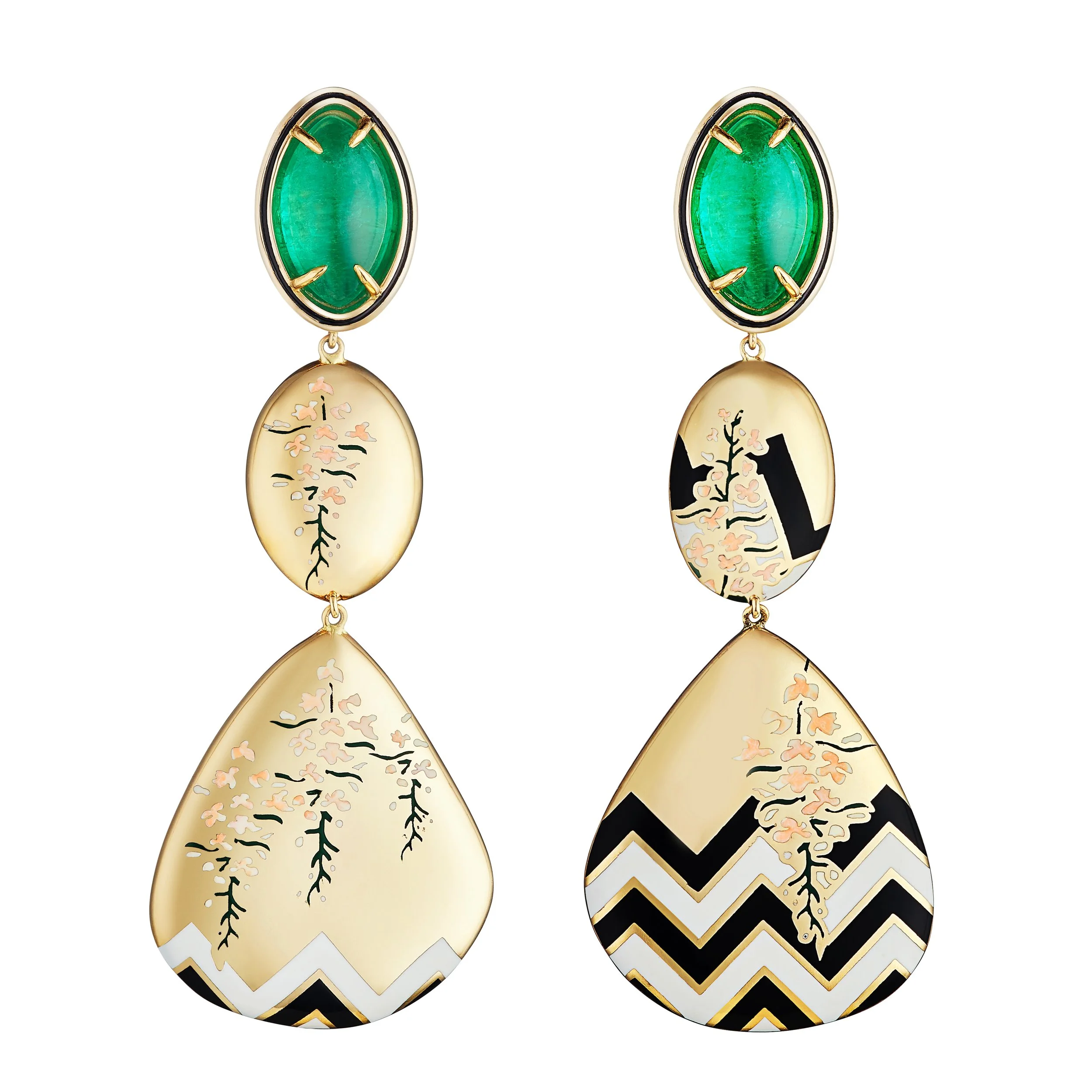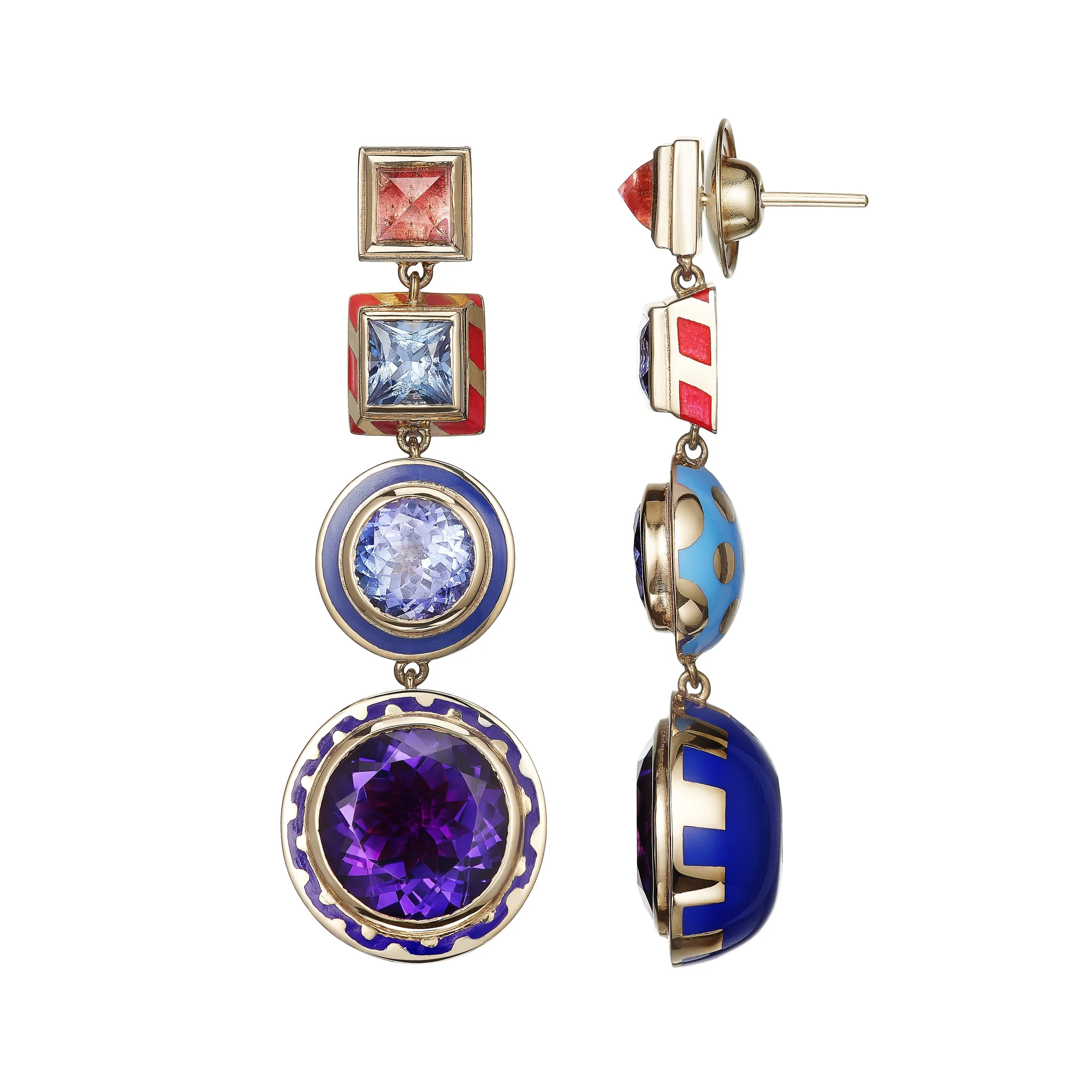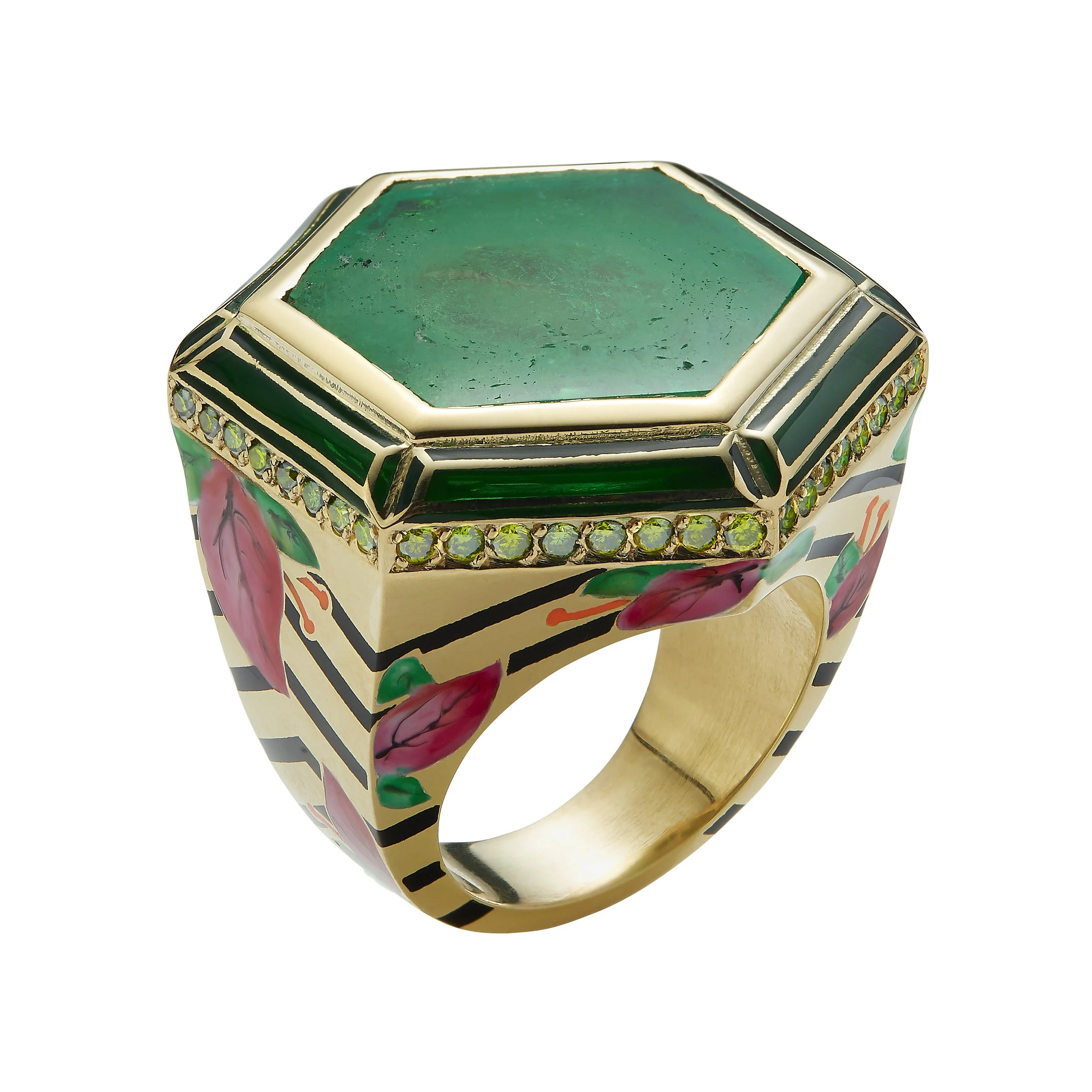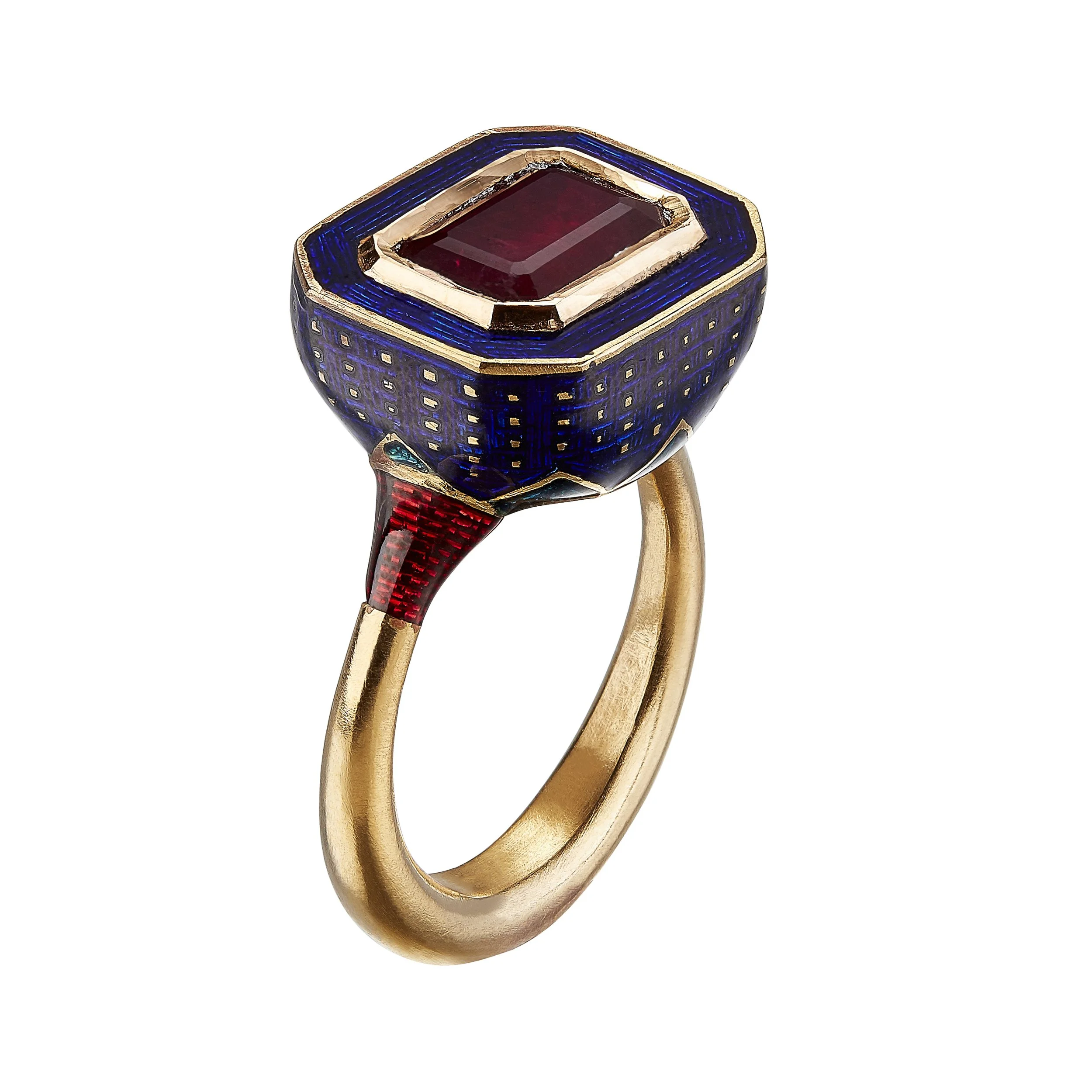
The Cardinal Gems
Gems have a rich history. The five “cardinal” stones – a classification that encompasses emerald, ruby, sapphire, diamond and tanzanite, which replaced amethyst on the list – are those considered to be the most precious, reflecting not only their scarcity in times past, but their material quality, too.
Today, they are valued using a system of four Cs: cut, colour, clarity and carat weight. But we must also take into consideration a stone’s mythic value, its perceived healing properties, its legends – all of which make up its unique beauty – if we are to attempt to assess its personal significance to us. Let’s look at them one by one.
Tanzanite
Tanzanite is a blue and violet variety of the mineral zoisite, coloured by trace amounts of vanadium. It’s found only in the Manyara region of Tanzania, in an area just 7km x 2km in size, so if rarity is a quality of preciousness, then tanzanite is exceedingly special.
The gem was “discovered” when, in the late 1960s, a bolt of lightning started a wildfire in the hills. When the flames subsided, Maasai herders, who were passing through, noticed brilliant blue crystals on the ground: the heat from the fire had heightened the colour of the stones, which they called skaiblu. It was officially named tanzanite by Tiffany & Co in 1967.
As a relative newcomer to the list, tanzanite has a folklore that is still unfolding. The Maasai people gift it to their newborn children to grant them health, positivity, good fortune and prosperity. It was listed as a December birthstone in 2002.
Emerald
Emerald is a variety of beryl coloured green by trace amounts of chromium or vanadium. It’s the traditional birthstone for May, embodying rebirth and renewal, as well as the gemstone for the astrological sign of Cancer, and is given to celebrate a 55th anniversary. The word emerald is derived from the Latin smaragdus, which comes from the Greek for green gem.
I frequently use emeralds in my work – I love their colour. In Ancient Egypt, they were integral to the myths surrounding Cleopatra, queen of Egypt. In one account of her seduction of Julius Caesar, her boudoir was described by the poet Marcus Annaeus Lucanus as being “with frequent emeralds studded”.
Traditional alchemical lore ascribes several uses to emeralds: one of their virtues was to counteract poison. It was said that if a venomous animal looked at an emerald, it would be blinded. The gem was also said to cure leprosy, strengthen sight and aid memory.
Ruby
Ruby is a variety of corundum coloured red by chromium (sapphire is a blue variant of the same mineral). The word comes from the Latin ruber, which means red, and the most highly prized stones are of a shade known as pigeon’s blood. I have a very particular taste in rubies: I prefer those that are essentially pink. Ruby is the birthstone for July, and is given to celebrate a 40th anniversary.
Rubies have long been associated with love, passion, youth and power and are held in high esteem in Asian countries. They were traded along the Silk Route and were often used to ornament armour, as well as being laid in temple foundations to encourage good fortune.
Many cultures believed that rubies had the power to melt wax, thanks to the “heat” that emanated from within them. That same power encouraged a belief that rubbing the gem on your skin could improve health, purging the body of toxins and renewing energy. A ruby amulet was held to make the wearer safe from disease and negative energetic attacks, as well as keeping poverty at bay – an actual manifestation of wealth.
Sapphire
Sapphire is a blue variety of corundum – its colour comes from trace elements such as iron and titanium. “Fancy” sapphires can also occur in yellow, purple, orange and green. So if I want a gem that’s punchy and neon-feeling, I reach for sapphires – they can be really bright and crisp. The word sapphire is derived from the Latin sapphirus, which came from the Greek term for lapis lazuli. It’s the birthstone for September, and is given to celebrate a 45th anniversary, symbolising love and commitment.
Historically, blue sapphires were associated with nobility and sincerity: the Greeks and Romans believed they could protect high-profile individuals from harm. An ancient Italian superstition holds that sapphires can ward off melancholy – and eye problems. Mary, Queen of Scots wore a medicinal sapphire pendant with which she would rub her eyelids.
According to legend, the very first ring contained a blue sapphire. It was worn by the impetuous Prometheus, who stole the secret of fire from the gods. Greeks wore sapphires for guidance when seeking answers from the oracle, Buddhists believed they brought spiritual enlightenment, and early Christian kings used the gems in ecclesiastical rings.
Diamond
Diamond is an allotrope of carbon in which the atoms are arranged in a specific cubic lattice. It is the hardest naturally occurring material known to man, and its name derives from the Greek word adamas, meaning invincible or unbreakable. Diamonds are one of the birthstones for April, and are also used as the symbol of a 60-year anniversary. They occur in 12 colours, including the classic “white”.
The supernatural power of diamonds is all-conquering. They were believed to protect against poison or attack, giving victory to those who carried them bound to their left arm, no matter the number of their enemies. Panics, pestilences and enchantments fled before them. They were also used to treat sleepwalkers.
The earliest symbolic use of diamonds was as the eyes of Hindu devotional statues – the gems were first discovered in Indian rivers and streams. In 1477, Archduke Maximillian of Austria commissioned the very first diamond engagement ring on record for Mary of Burgundy, sparking a trend among the European aristocracy, but it was not until 1947 that De Beers came up with their classic slogan, “A diamond is forever”.











